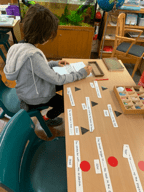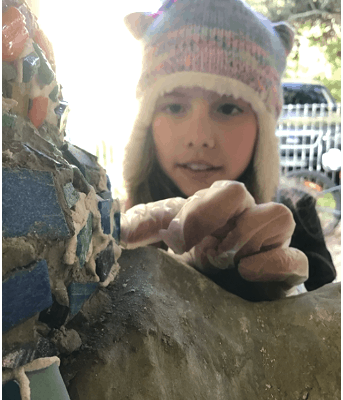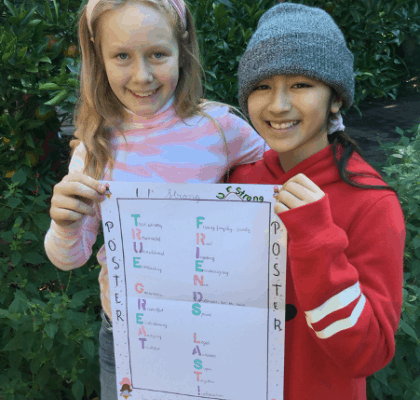As term two draws to an end the children have made great progress in all areas, despite the COVID-19 interruptions to normal school attendance at the end of term one and the beginning of term 2. An ever-increasing amount of lessons have been given in all curriculum areas; though at times it has felt like we were beginning the year all over again. We all know that learning is important, but we cannot assume that children have not been learning during the period of interruption, even if that learning does not correspond to the usual curriculum. Children are always learning. We need to shift the focus from ‘catchup’ to ‘start with where the children are’, rather than focus on where we would like them to be, and how to get them all to the same point as quickly as possible.
Over the past nine weeks there has been an amazing variety of great work taking place in the classroom. This work has been a mix of self-initiated responses to a lesson presentation, research or curiosity-based projects or suggested or set follow-up work to a presentation. Natural integration of the key learning areas is evident in the variety and complexity of the work. It has been wonderful and insightful to observe the children at work. Each day we see evidence of children naturally reviewing past work, building on their knowledge base, and moving onto more challenging work. We also see evidence of those children who are not quite ready or peaceful, who require nurturing, encouragement and support to fulfil ‘purposeful’ work. We have observed when deep learning is taking place; the busy, sometimes chaotic sounds of the environment becomes a ‘hum’, and then a silence as concentrated effort takes over. This is a ‘constructivist’ environment. Key lessons are given regularly to the children. Self-chosen or suggested follow-up then takes place. There is the opportunity for deep reflection and learning to take place as the key elements of a lesson are transformed into ‘big’ work; resulting in practice with the sensorial materials, the creation of booklets, posters, or other personal responses.
Over the past four weeks the transition children from 6-9 have been visiting and are eager to be like the ‘older’ children, as they come to understand the process of ‘purposeful’ work and the life and workings of the 9 to 12 environment. It can be overwhelming at first because the child has moved from the known to the unknown. They like the older children need to time to socialise, interact and form ever-changing social groups. They need time to take in all that is new, reflect, ponder, and respond when ready. It is important to note that our special environments foster a love of learning in a safe and secure setting. These are not hurried classrooms where subject matter and learning opportunities are broken down into small blocks of time.
We would encourage all parents of 6 to 12 children to read the first four chapters of Dr. Maria Montessori’s book, ‘To Educate the Human Potential’. In these chapters Dr. Montessori outlines her plan for the needs of the child after the age of six. She stresses the right use of imagination in awakening interest in ourselves, humanity of the past, and our relationship to the earth and the universe. Our classroom environments are special places, unhurried places, where children are not being asked to ‘peak’ at a particular age, grade level or to a test. They are special places where each child develops at their own pace.
Below is a snapshot of ‘great work’:
Language:
In Language this term, we have worked through Word Study which focuses on the changes in words as our language has developed and it helps to extend children’s vocabulary and enrichment. Word Study also provides help and assistance with spelling. In Word Study, the children have worked through activities for Homophones, Homonyms, Homographs and Word Families.
History:
In History this term, some children have been presented with the ‘Story of Migration’ and the impressionistic charts for Migration. Through the presentation of the story, the children have explored the different types of migration and how human movements have played an important part in history. The Impressionistic Charts highlight the causes and the results of the contacts of different people and to help children recognise some of the different reasons behind these human movements. These presentations have inspired children to do further research on the Migration Policy, Boat People, Refugees and Asylum Seekers.
Practicing telling time on the analogue clock, digital clock and 24-hour time.
Biology:
In Biology, the children have listened to an original story called ‘The Virus’ and from this they have independently started research on types of virus’, diseases and pandemics.
‘The Specific Needs of the Plant’ experiment.
Some children have also been presented with Kingdom Vegetalia which is the scientific classification of the plant kingdom. This has also opened up opportunities for children to revisit the vegetative and reproductive parts of the plant in biology.
Mathematics:
In Mathematics, some children have been working through Prerequisites to Squaring, and Squaring and Cubing.
Fractions: Working through addition, subtraction, division and multiplication of fractions, improper fractions, mixed fractions and irreducible fractions.
Distributive Division with the Racks and Tubes, Multiples, Factors, Geometric Form of Multiplication, Numerical and Algebraic Decanomial, and Operations on the Decimal Checkerboard.
Geometry:
Classifying and Measuring Angles, Lines and The Circle.
Music:
The Bells.
Mother’s Day Celebration:
Preparing the sugar scrub.
Handiwork:
Knitting, finger knitting, crochet and various visual artwork.
Visual Arts:
The 9-12’s have been collaborating with the 6-9 children in making some beautiful public artworks for the school such as colourful patterned designs for the goal post pads on the school oval and a book ‘swap’ box made from recycled materials that the children are now beginning to mosaic for the front school area inspired by architect Antonio Gaudi.
In their art journals the children have been exploring the work of Picasso, and created their own ‘big work’ by researching artists and designers of their own choice and exploring techniques and materials they are interested in.
As always there is buzz of cross-curricular creativity with the creation of models, illustrations and designs for follow-up work and class projects across all subjects.
And if this wasn’t enough we have some gallery curators in the making, taking on leadership roles in organising displays around the school, please pop by the reception area to see the display of their favourite work from last terms digital book design project if you are looking for some creative inspiration!
Sport:
Dribbling, passing and shooting are the key skills the 9-12’s have been practising during this terms Basketball lessons in the Aussie Hoops program that focuses activities and skills around game-based learning.
Athletics Australia’s Kids Athletics program has been the sport focus of the second half of the term which focuses on extending the children’s fundamental skills in Running, Jumping and Throwing through a wide variety of fun games and challenges that the children have been adapting to suit their own abilities.
As always the 9-12’s have been assisting with the 5-year-old and 6-9 sport program and motivating the younger children to have fun and stay active. This term we have seen the successful introduction of 9-12 sport mentors who have been planning engaging physical activities and demonstrating skills and techniques for their peers in their own sport lessons.
UR Strong:
The UR Strong program teaches children how to put a voice to their feelings, create healthy friendships, and build a solid foundation for future relationships.
This term children have been demonstrating their theatrical sides and creating role plays that explore topics such as healthy and unhealthy relationships, what makes a great friend and how to assert yourself when you experience mean-on-purpose behaviour.
As the term draws to a close, we wish all the children and parents a safe and fun break. We look forward to seeing you again in Term 3.
Regards,
Anthony, Lauren & Tamlin.







































